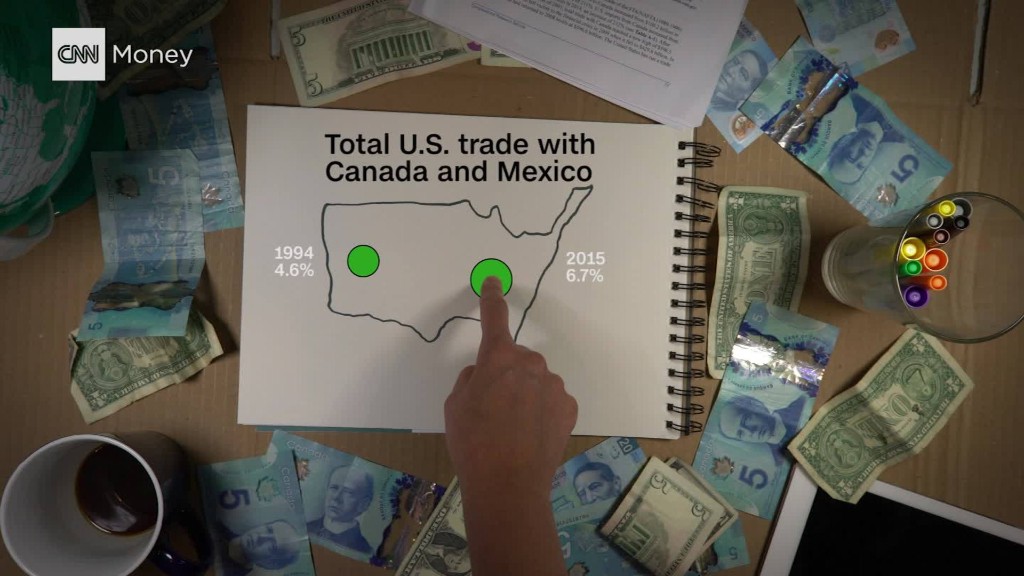
President Trump's most hated number is getting bigger.
Trump often cites the U.S. trade deficit as a sign that America is losing to China, Mexico and other countries on trade. He uses it to justify renegotiating trade deals and slapping tariffs on other countries' products.
And the president has promised repeatedly to cut the trade deficit. But so far this year, it's only growing.
The trade deficit in goods and services was $463 billion from January through October, up 12% from a year ago, the Commerce Department said Tuesday. The United States has a surplus in services, such as banking, but a bigger deficit in goods, such as cars.
And the gap with Trump's two favorite rhetorical trade targets, Mexico and China, is getting bigger. The overall trade deficit with Mexico is up 11% this year, and the deficit with China is up 7%.
A trade deficit doesn't mean the United States is losing money to China or Mexico, which is how Trump sometimes framed it during his presidential campaign. It means American businesses and consumers bought more goods and services from Mexico or China than those countries' consumers bought from American businesses.
Trade experts say the deficit is not an appropriate way to value a trading relationship. The Trump administration disagrees.
The trade deficit does point out some problems in America's relationships with other countries. For example, economists widely believe the deficit with China is bigger because China blocks some American companies from its market.
But there is no correlation between a growing U.S. trade deficit and a weak economy. When the U.S. economy was growing 4% a year in the late 1990s, the trade deficit was ballooning. When the Great Recession began in late 2007, the trade deficit shrank.
This year, consumer confidence and business optimism are at their highest in years. Unemployment is 4.1%, the lowest since 2000. Those factors drive up demand for imports, which are up 6% this year. Exports are up 5%.


